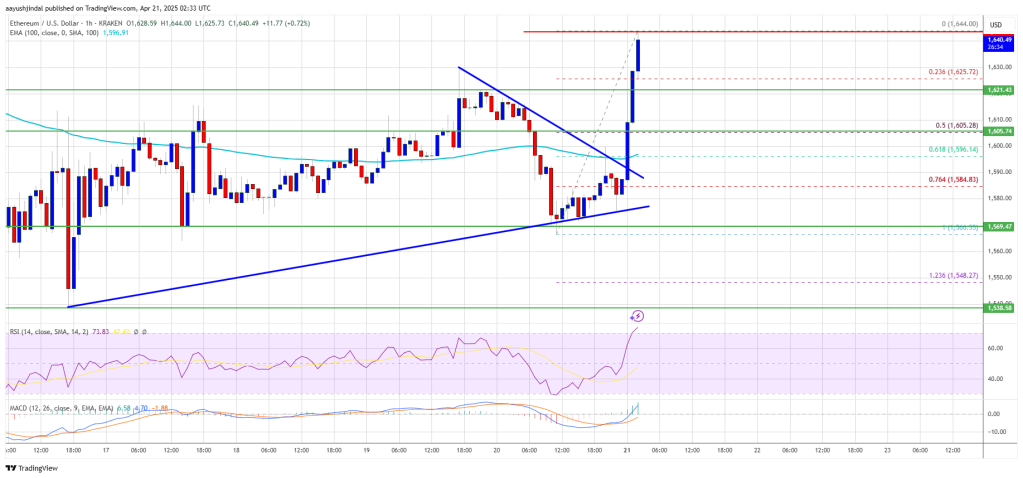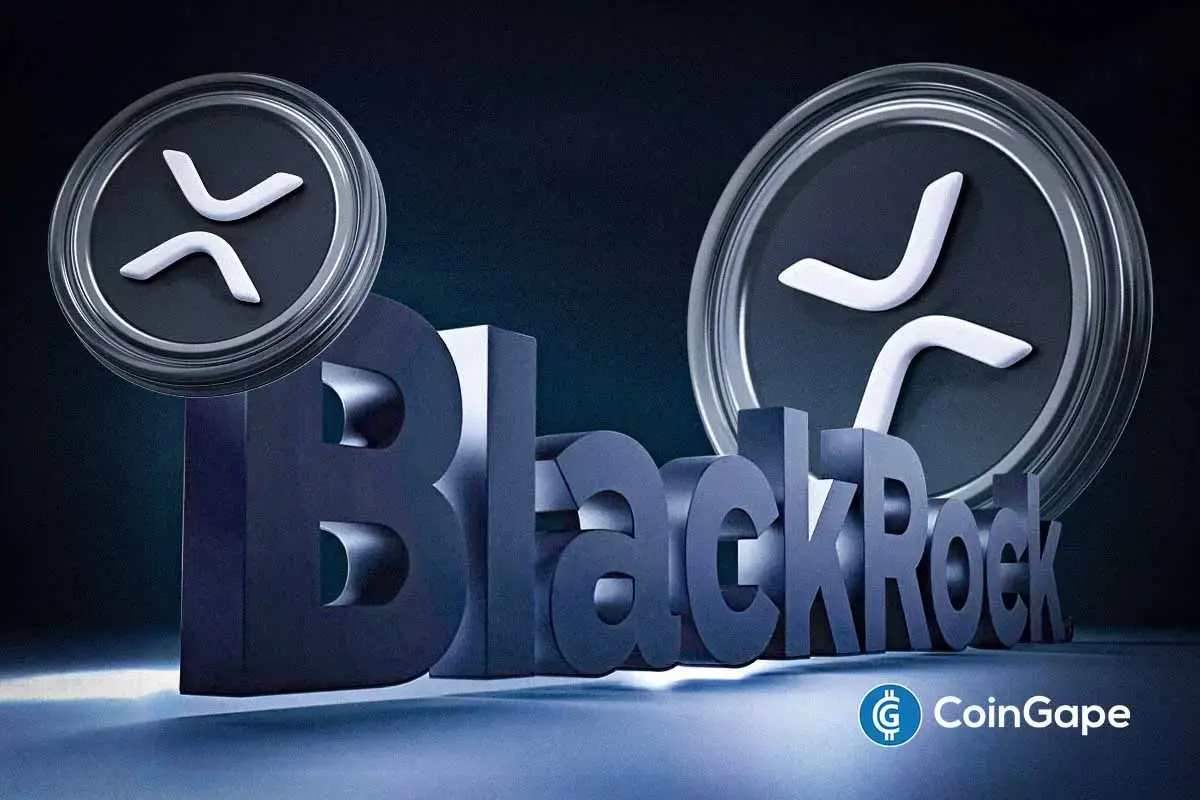Market
AI Agents to Redefine Economies


Bitcoin’s monumental rise past the $100,000 milestone has cemented its role as a central player in the global financial space. As the crypto market watches the next move with bated breath, Andreessen Horowitz (a16z) has released its annual list of tech predictions, anticipating the transformative potential of blockchain technology in 2025.
These predictions highlight the innovations poised to shape the crypto ecosystem and beyond, from AI-powered agents to on-chain government bonds.
The Dawn of Autonomous Digital Economies
According to Carra Wu, a partner on the a16z crypto investment team, AI agents are set to transition from passive tools to autonomous network participants. Armed with their own wallets, signing keys, and crypto assets, these AI agents could revolutionize industries.
For instance, decentralized physical infrastructure networks (DePIN) might see AI agents operating and verifying nodes. This could enable more efficient energy distribution or even the creation of AI-operated blockchains.
“These agents won’t just be participants, they’ll be creators and operators, driving entirely new economic models,” Wu noted.
The concept gains traction as AI agents already demonstrate their ability to transact using cryptocurrencies. This evolution could unlock high-value applications, from gaming to managing decentralized assets.
Decentralized Chat Bots
Dan Boneh, a16z crypto senior research advisor, and colleagues introduce the idea of decentralized autonomous chatbots (DACs). The concept pushes the boundaries of AI autonomy. Running on a trusted execution environment (TEE), these chatbots could manage their own assets, generate income, and operate independently.
“This isn’t just about novelty. DACs could redefine digital interaction, potentially becoming billion-dollar autonomous entities,” Boneh explained.
However, the autonomy of such systems raises questions about regulation, ethics, and security. While the technology holds promise, it may also necessitate strong oversight to prevent misuse.
Stablecoins and On-Chain Government Bonds
The adoption of stablecoins and tokenized government bonds is expected to accelerate in 2025. Eddy Lazzarin, the chief technology officer for a16z crypto, predicts that enterprises, especially small and medium businesses, will adopt stablecoins for their cost-efficiency in payments.
“Stablecoins could add 2% directly to the bottom line of enterprises by dis-intermediating payment providers,” he said.
On a broader scale, Brian Quintenz, the Head of Policy for a16z crypto, envisions governments issuing bonds on blockchain platforms. Tokenized bonds could unlock new collateral sources for decentralized finance (DeFi) protocols while increasing transparency and efficiency in the traditional bond market.
The UK and the US are already exploring these possibilities, with regulatory sandboxes paving the way for innovation.
Proof of Personhood
In an era of deepfakes and digital impersonations, proof of personhood emerges as a critical need. Lazzarin emphasizes the importance of creating privacy-preserving, unique digital identifiers to verify interactions with real individuals.
“This is about raising the cost of attacks. Linking content to people privately and securely can protect the integrity of digital networks,” Lazzarin asserted.
Such advancements could fundamentally shift the balance in combating fraud, especially as AI-generated content continues to proliferate.
The Evolution of Prediction Markets
While prediction markets gained traction during the 2024 US elections, Scott Duke Kominers, a Research Partner at a16z crypto, foresees their utility expanding far beyond politics. These platforms could evolve into sophisticated tools for aggregating and analyzing information across sectors, from community governance to finance.
“Prediction markets are just the beginning. We’re heading toward more robust mechanisms for real-time information aggregation and decision-making,” Kominers explained.
Blockchains will likely play a central role, enabling decentralized, auditable, and incentive-driven systems to thrive.
Reimagining User Experience in Crypto
A16z partners also highlight the need for user-friendly crypto solutions. Mason Hall, a partner on the a16z crypto investment team, predicts that developers will focus on designing intuitive experiences, abstracting away complex infrastructure.
“Users shouldn’t need to understand blockchain intricacies to benefit from the technology,” Hall stated.
Similarly, Chris Lyons, president of Web3 Media at a16z crypto, advocates for “hiding the wires.” He compares the next wave of decentralized applications (dApps) to the simplicity of Spotify or email.
Liquid Democracy and Decentralized Governance
Andrew Hall, a consultant to the a16z crypto research team, envisions blockchain-powered governance systems taking root. With secure voting mechanisms and the implementation of liquid democracy, local governments could pioneer new forms of participatory decision-making.
“Crypto-enabled governance isn’t just for online communities. We can reimagine how physical-world governance operates, starting with local pilots,” Hall suggested.
As crypto infrastructure matures, 2025 may witness a confluence of technological, financial, and societal innovations. From tokenizing unconventional assets to adopting decentralized unincorporated nonprofit associations (DUNAs), the ecosystem is changing to meet diverse needs.
Bitcoin’s sustained rally above $100,000 symbolizes not just market confidence but also the broader adoption of blockchain technologies. With a16z’s predictions providing a roadmap, the crypto industry stands on the brink of a transformative era.
“The future of crypto isn’t just about ownership; it’s about usability, accessibility, and global impact,” said Sam Broner, partner on the investing team at a16z crypto.
Disclaimer
In adherence to the Trust Project guidelines, BeInCrypto is committed to unbiased, transparent reporting. This news article aims to provide accurate, timely information. However, readers are advised to verify facts independently and consult with a professional before making any decisions based on this content. Please note that our Terms and Conditions, Privacy Policy, and Disclaimers have been updated.
Market
Ethereum Price Clings to Support—Upside Break Could Trigger Rally

Reason to trust

Strict editorial policy that focuses on accuracy, relevance, and impartiality
Created by industry experts and meticulously reviewed
The highest standards in reporting and publishing
Strict editorial policy that focuses on accuracy, relevance, and impartiality
Morbi pretium leo et nisl aliquam mollis. Quisque arcu lorem, ultricies quis pellentesque nec, ullamcorper eu odio.
Ethereum price started a increase from the $1,550 zone. ETH is now rising and might attempt to recover above the $1,650 resistance.
- Ethereum started a fresh increase above the $1,580 and $1,600 levels.
- The price is trading above $1,600 and the 100-hourly Simple Moving Average.
- There was a break above a connecting bearish trend line with resistance at $1,590 on the hourly chart of ETH/USD (data feed via Kraken).
- The pair could start a fresh increase if it clears the $1,650 resistance zone.
Ethereum Price Eyes Upside Break
Ethereum price remained stable above the $1,500 level and started a fresh increase, like Bitcoin. ETH traded above the $1,550 and $1,600 levels to enter a short-term positive zone.
There was a break above a connecting bearish trend line with resistance at $1,590 on the hourly chart of ETH/USD. The pair even cleared the $1,620 resistance. A high was formed at $1,644 and the price is stable above the 23.6% Fib retracement level of the upward move from the $1,566 swing low to the $1,644 high.
Ethereum price is now trading above $1,600 and the 100-hourly Simple Moving Average. On the upside, the price seems to be facing hurdles near the $1,640 level. The next key resistance is near the $1,650 level. The first major resistance is near the $1,680 level.

A clear move above the $1,680 resistance might send the price toward the $1,720 resistance. An upside break above the $1,720 resistance might call for more gains in the coming sessions. In the stated case, Ether could rise toward the $1,800 resistance zone or even $1,840 in the near term.
Downside Correction In ETH?
If Ethereum fails to clear the $1,650 resistance, it could start a downside correction. Initial support on the downside is near the $1,620 level. The first major support sits near the $1,605 zone and the 50% Fib retracement level of the upward move from the $1,566 swing low to the $1,644 high.
A clear move below the $1,605 support might push the price toward the $1,580 support. Any more losses might send the price toward the $1,550 support level in the near term. The next key support sits at $1,500.
Technical Indicators
Hourly MACD – The MACD for ETH/USD is gaining momentum in the bullish zone.
Hourly RSI – The RSI for ETH/USD is now above the 50 zone.
Major Support Level – $1,600
Major Resistance Level – $1,650
Market
Will Bittensor Surpass Bitcoin as a Store of Value? Expert Predicts

Barry Silbert, CEO of Digital Currency Group, has stated that Bittensor (TAO) has the potential to outperform Bitcoin (BTC) as a global store of value.
His comments come amid notable growth in the Bittensor network, with its subnet ecosystem market capitalization and the TAO token’s price on the rise.
Will Bittensor’s Decentralized AI Model Outperform Bitcoin’s Legacy?
In a recent interview with Raoul Pal, Silbert highlighted the growing influence of artificial intelligence (AI) in the crypto sector. According to him, Bittensor is at the forefront of this revolution, representing the “next big era for crypto.”
“You had the Bitcoin and the Ethereum and the NFTs, and you had the layer 2s and DeFi. I think this is the next big investment theme for crypto,” Silbert stated.
He went on to explain that Bittensor shares the same pioneering spirit as early Bitcoin. Still, its purpose extends beyond financial sovereignty.
“The boldest prediction that I could make for Bittensor is it could be a better version of Bitcoin as a global store of value,” he claimed.
He argued that instead of the $10 to $12 billion spent annually to secure the Bitcoin network, that same amount could be redirected toward incentivizing a global network of individuals working to solve major world problems. He envisions this money fostering innovation on a massive scale, with the potential to grow into a multi-billion-dollar ecosystem.
While acknowledging the value of securing the Bitcoin network, Silbert emphasized that Bittensor’s potential lies in its ability to harness this vast financial backing to address real-world challenges.
He noted that Bittensor operates on a similar economic model to Bitcoin, with halving mechanisms and decentralization, positioning it as a powerful contender in the quest for a more impactful and value-driven global network.
Silbert also noted that while plenty of decentralized AI projects have emerged, Bittensor has set itself apart. He referred to it as having reached “escape velocity.” This term is used to convey a project’s rapid growth and increasing market influence.
“99.9% of crypto tokens that are out there have no reason to exist and are worthless,” he added.
Market data reflects the growing enthusiasm for Bittensor. Notably, amid the ongoing volatility, TAO has fared well in comparison to the broader market, rising 32.1% in the last week. At press time, the altcoin was trading at $328, up 7.2% over the past day.

Additionally, TAO is currently the top trending cryptocurrency on CoinGecko, underlining its rising popularity among investors. Google Trends data further proves the growing interest in Bittensor. The search volume peaked at 100 at the time of writing.
Meanwhile, the Bittensor ecosystem is also seeing notable progress. The latest data indicated that the market capitalization of Bittensor’s subnet tokens more than doubled in April 2025.

It increased by 166%, rising from $181 million at the beginning of April to $481 million at press time. As reported by BeInCrypto, this growth follows a tripling of active subnets over the past year.
Disclaimer
In adherence to the Trust Project guidelines, BeInCrypto is committed to unbiased, transparent reporting. This news article aims to provide accurate, timely information. However, readers are advised to verify facts independently and consult with a professional before making any decisions based on this content. Please note that our Terms and Conditions, Privacy Policy, and Disclaimers have been updated.
Market
XRP Bulls Defend $2.00—Is a Fresh Price Surge Loading?

Aayush Jindal, a luminary in the world of financial markets, whose expertise spans over 15 illustrious years in the realms of Forex and cryptocurrency trading. Renowned for his unparalleled proficiency in providing technical analysis, Aayush is a trusted advisor and senior market expert to investors worldwide, guiding them through the intricate landscapes of modern finance with his keen insights and astute chart analysis.
From a young age, Aayush exhibited a natural aptitude for deciphering complex systems and unraveling patterns. Fueled by an insatiable curiosity for understanding market dynamics, he embarked on a journey that would lead him to become one of the foremost authorities in the fields of Forex and crypto trading. With a meticulous eye for detail and an unwavering commitment to excellence, Aayush honed his craft over the years, mastering the art of technical analysis and chart interpretation.
As a software engineer, Aayush harnesses the power of technology to optimize trading strategies and develop innovative solutions for navigating the volatile waters of financial markets. His background in software engineering has equipped him with a unique skill set, enabling him to leverage cutting-edge tools and algorithms to gain a competitive edge in an ever-evolving landscape.
In addition to his roles in finance and technology, Aayush serves as the director of a prestigious IT company, where he spearheads initiatives aimed at driving digital innovation and transformation. Under his visionary leadership, the company has flourished, cementing its position as a leader in the tech industry and paving the way for groundbreaking advancements in software development and IT solutions.
Despite his demanding professional commitments, Aayush is a firm believer in the importance of work-life balance. An avid traveler and adventurer, he finds solace in exploring new destinations, immersing himself in different cultures, and forging lasting memories along the way. Whether he’s trekking through the Himalayas, diving in the azure waters of the Maldives, or experiencing the vibrant energy of bustling metropolises, Aayush embraces every opportunity to broaden his horizons and create unforgettable experiences.
Aayush’s journey to success is marked by a relentless pursuit of excellence and a steadfast commitment to continuous learning and growth. His academic achievements are a testament to his dedication and passion for excellence, having completed his software engineering with honors and excelling in every department.
At his core, Aayush is driven by a profound passion for analyzing markets and uncovering profitable opportunities amidst volatility. Whether he’s poring over price charts, identifying key support and resistance levels, or providing insightful analysis to his clients and followers, Aayush’s unwavering dedication to his craft sets him apart as a true industry leader and a beacon of inspiration to aspiring traders around the globe.
In a world where uncertainty reigns supreme, Aayush Jindal stands as a guiding light, illuminating the path to financial success with his unparalleled expertise, unwavering integrity, and boundless enthusiasm for the markets.
-

 Market18 hours ago
Market18 hours ago1 Year After Bitcoin Halving: What’s Different This Time?
-

 Market19 hours ago
Market19 hours agoVOXEL Climbs 200% After Suspected Bitget Bot Glitch
-

 Market22 hours ago
Market22 hours agoMELANIA Crashes to All-Time Low Amid Insiders Continued Sales
-

 Market17 hours ago
Market17 hours agoTokens Big Players Are Buying
-

 Market23 hours ago
Market23 hours agoCharles Schwab Plans Spot Crypto Trading Rollout in 2026
-

 Altcoin20 hours ago
Altcoin20 hours agoBinance Traders Go Big On Dogecoin—Majority Holding Long Positions
-

 Market16 hours ago
Market16 hours agoDogecoin Defies Bullish Bets During Dogeday Celebration
-

 Ethereum24 hours ago
Ethereum24 hours agoEthereum Enters Historic Buy Zone As Price Dips Below Key Level – Insights






















